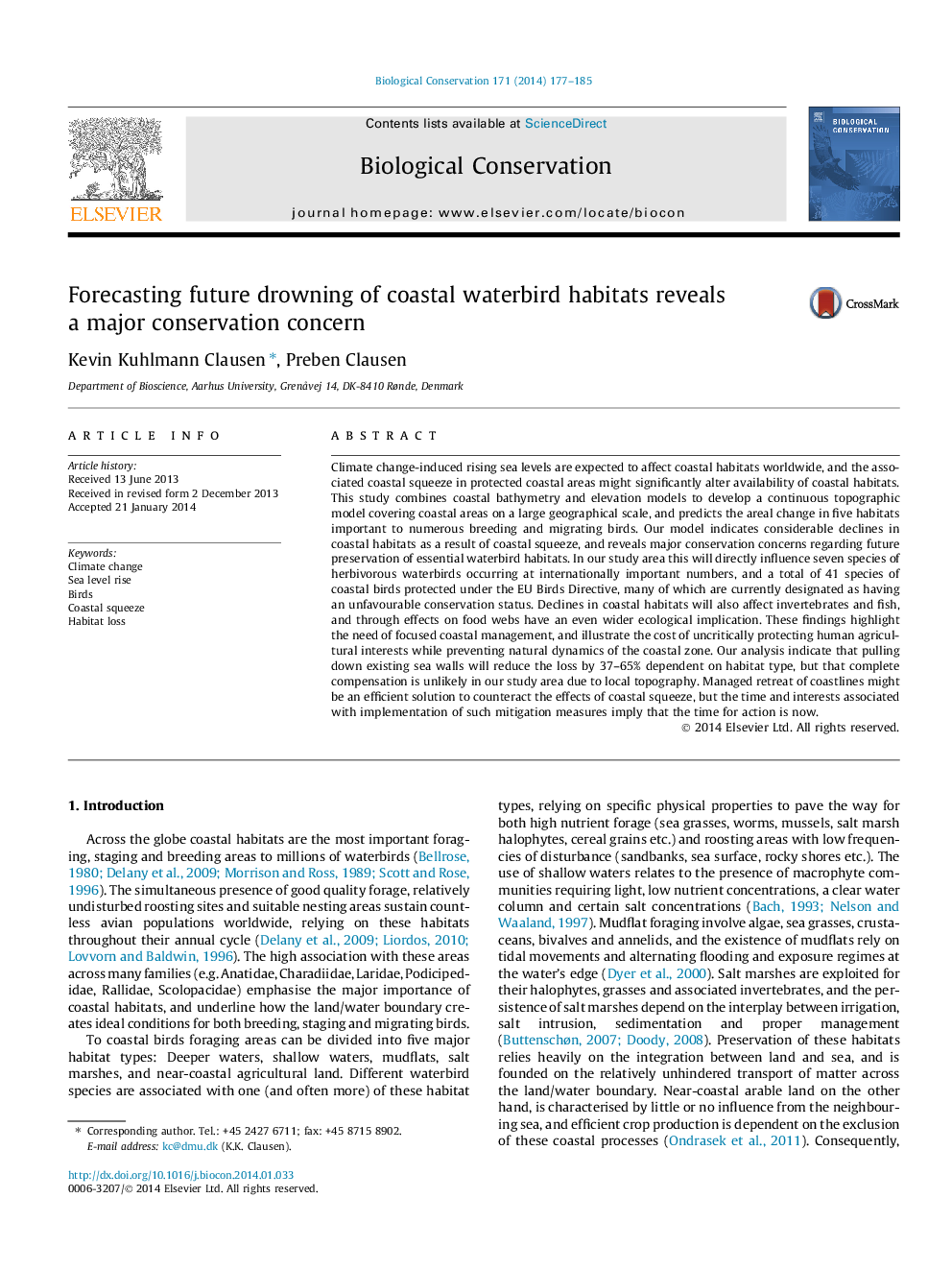| Article ID | Journal | Published Year | Pages | File Type |
|---|---|---|---|---|
| 6299879 | Biological Conservation | 2014 | 9 Pages |
Abstract
Climate change-induced rising sea levels are expected to affect coastal habitats worldwide, and the associated coastal squeeze in protected coastal areas might significantly alter availability of coastal habitats. This study combines coastal bathymetry and elevation models to develop a continuous topographic model covering coastal areas on a large geographical scale, and predicts the areal change in five habitats important to numerous breeding and migrating birds. Our model indicates considerable declines in coastal habitats as a result of coastal squeeze, and reveals major conservation concerns regarding future preservation of essential waterbird habitats. In our study area this will directly influence seven species of herbivorous waterbirds occurring at internationally important numbers, and a total of 41 species of coastal birds protected under the EU Birds Directive, many of which are currently designated as having an unfavourable conservation status. Declines in coastal habitats will also affect invertebrates and fish, and through effects on food webs have an even wider ecological implication. These findings highlight the need of focused coastal management, and illustrate the cost of uncritically protecting human agricultural interests while preventing natural dynamics of the coastal zone. Our analysis indicate that pulling down existing sea walls will reduce the loss by 37-65% dependent on habitat type, but that complete compensation is unlikely in our study area due to local topography. Managed retreat of coastlines might be an efficient solution to counteract the effects of coastal squeeze, but the time and interests associated with implementation of such mitigation measures imply that the time for action is now.
Related Topics
Life Sciences
Agricultural and Biological Sciences
Ecology, Evolution, Behavior and Systematics
Authors
Kevin Kuhlmann Clausen, Preben Clausen,
